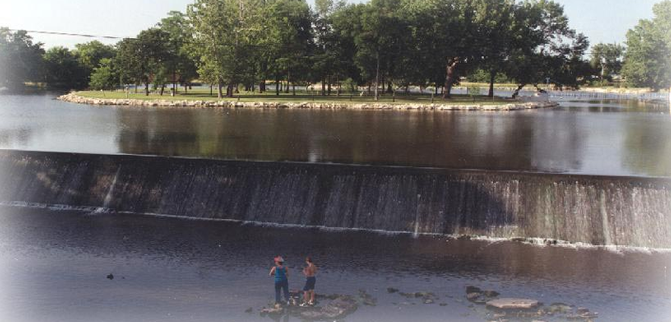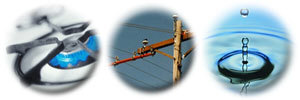 |
HOME
|
 |

Our Departments |
|
Police Department |
|
Event Calendar |
|
City Newsletters |
|
Fairbank GIS Maps |
|
Water
Fairbank is Proud to Own and Operate Your Reliable Utility Company!
 Public Works Director -
Public Works Director -
Assistant Public Works Director - Ben Delagardelle
Water/ Waste Water Plant Operator - Brian Delagardelle
Contact City Hall for information on a budgeting plan.
In the event of a utility leak or emergency Call 911 IMMEDIATELY!
Call Iowa One Call or City Hall before you Dig
 IT'S FREE AND IT IS THE LAW. Many utilities including city owned are buried throughout the city! DO NOT DIG ANYWHERE ON OR OFF YOUR LOT WITHOUT HAVING A LOCATE ON BURIED UTILITIES DONE! Any damaged or interrupted service caused by unauthorized digging will result in you paying for all the damages and labor, and a possible fine!
IT'S FREE AND IT IS THE LAW. Many utilities including city owned are buried throughout the city! DO NOT DIG ANYWHERE ON OR OFF YOUR LOT WITHOUT HAVING A LOCATE ON BURIED UTILITIES DONE! Any damaged or interrupted service caused by unauthorized digging will result in you paying for all the damages and labor, and a possible fine!
Not to mention you could be injured or killed!
2022 Water Quality Report for Fairbank Water Supply - DOWNLOAD PDF COPY
This report will not be individually mailed and is available here to view and print if needed.
This report contains important information regarding the water quality in our water system. The source of our water is groundwater. Our water quality testing shows the following results:
|
Contaminant |
MCL (MCLG) |
Compliance |
Year Tested |
Violation Yes/No |
Source |
|
|
Type |
Result (Range) |
|||||
|
City of Fairbank |
||||||
|
Copper (ppm) |
AL=1.3 (1.3) |
90th |
0..0436 (ND - 0.107) |
2022 |
No |
Corrosion of household plumbing systems; Erosion of natural deposits; Leaching from wood preservatives. |
|
Lead (ppb) |
AL=15 (0) |
90th |
4.10 (ND - 135) 1 sample exceeded AL
|
2022 |
No |
Corrosion of household plumbing systems; erosion of natural deposits. |
|
Distribution System |
|
|
|
|
|
|
|
Chlorine (ppm) |
MRDL=4.0 |
RAA |
2.2 (1.57 - 3.6) |
2022 |
No |
Water additive used to control microbes. |
|
|
||||||
|
Iowa Regional Utilities Association (Waverly, IA) |
||||||
|
S/EP FROM Well #1 |
||||||
|
Gross Alpha (pCi/L) |
15 (0) |
SGL |
1.4 |
2019 |
No |
Erosion of natural deposits. |
|
Sodium (ppm) |
N/A (N/A) |
SGL |
11.6 |
2020 |
No |
Erosion of natural deposits; Added to water during the treatment process. |
|
Nitrate [as N] (ppm) |
10 (10) |
SGL |
4.6 (4.3 – 4.6) |
2022 |
No |
Runoff from fertilizer use; Leaching from septic tanks, sewage; Erosion of natural deposits. |
|
S/EP FROM Well #2 |
||||||
|
Sodium (ppm) |
N/A (N/A) |
SGL |
9.85 |
2021 |
No |
Erosion of natural deposits; Added to water during the treatment process. |
|
Nitrate [as N] (ppm) |
10 (10) |
SGL |
4.6 (4.3 - 4.6) |
2022 |
No |
Runoff from fertilizer use; Leaching from septic tanks, sewage; Erosion of natural deposits. |
For questions regarding this information or how you can get involved in decisions regarding the water system, please contact the City of Fairbank at 319-635-2869.
DEFINITIONS
- Action Level (AL) – The concentration of a contaminant which, if exceeded, triggers treatment or other requirements which a water system must follow.
- Maximum Contaminant Level (MCL) – The highest level of a contaminant that is allowed in drinking water. MCLs are set as close to the MCLGs as feasible using the best available treatment technology.
- Maximum Contaminant Level Goal (MCLG) – The level of a contaminant in drinking water below which there is no known or expected risk to health. MCLGs allow for a margin of safety.
- Maximum Residual Disinfectant Level (MRDL) – The highest level of a disinfectant allowed in drinking water. There is convincing evidence that addition of a disinfectant is necessary for control of microbial contaminants.
- Maximum Residual Disinfectant Level Goal (MRDLG) – The level of a drinking water disinfectant below which there is no known or expected risk to health. MRDLGs do not reflect the benefits of the use of disinfectants to control microbial contaminants.
DEFININTIONS CONT.
- N/A – Not applicable
- ND – Not detected
- ppb – parts per billion
- ppm – parts per million
- RAA – Running Annual Average
- SGL – Single Sample Result
- RTCR – Revised Total Coliform Rule
GENERAL INFORMATION
Drinking water, including bottled water, may reasonably be expected to contain at least small amounts of some contaminants. The presence of contaminants does not necessarily indicate that water posed a health risk. More information about contaminants or potential health effects can be obtained by calling the Environmental Protection Agency's Safe Drinking Water Hotline (800-426-4791).
Some people may be more vulnerable to contaminants in drinking water than the general population. Immuno-compromised persons such as persons with cancer undergoing chemotherapy, persons who have undergone organ transplants, people with HIV/AIDS or other immune system disorders, some elderly, and infants can be particularly at risk from infections. These people should seek advice about drinking water from their health care providers. EPA/CDC guidelines on appropriate means to lessen the risk of infection by Cryptosporidium and other microbial contaminants are available from the Safe Drinking Water Hotline (800-426-4791).
If present, elevated levels of lead can cause serious health problems, especially for pregnant women and young children. Lead in drinking water is primarily from materials and components associated with service lines and home plumbing. The City of Fairbank is responsible for providing high quality drinking water, but cannot control the variety of materials used in plumbing components. When your water has been sitting for several hours, you can minimize the potential for lead exposure by flushing your tap for 30 seconds to 2 minutes before using water for drinking or cooking. If you are concerned about lead in your drinking water, you may wish to have your water tested. Information on lead in drinking water, testing methods, and steps you can take to minimize exposure is available from the Safe Drinking Water Hotline or at http://www.epa.gov/safewater/lead.
SOURCE WATER ASSESSMENT INFORMATION
This water supply obtains its water from the sandstone and dolomite of the Cambrian-Ordovician aquifer. The Cambrian–Ordovician aquifer was determined to have low susceptibility to contamination because the characteristics of the aquifer and overlying materials provide natural protection from contaminants at the land surface. The Cambrian-Ordovician well will have low susceptibility to surface contaminants such as leaking underground storage tanks, contaminant spills, and excess fertilizer application. A detailed evaluation of your source water was completed by the Iowa Department of Natural Resources, and is available from the Water Operator at 319-635-2869.
This water supply obtains its water from the dolomite and limestone of the Silurian-Devonian aquifer. The Silurian-Devonian aquifer was determined to be highly susceptible to the contamination because the characteristic of the aquifer and overlying materials provide little protection from contamination at the land surface. The Silurian-Devonian well will be highly susceptible to surface contaminants such as leaking underground storage tanks, contaminant spills, and excess fertilizer application. A detailed evaluation of the source water previously used by Fairbank was completed by the Iowa Department of Natural Resources, and is available from the Water Operator at (319) 240-8065.
This waterloo supply obtains some or all of its water from abother public water supply. It is a consecutive water supply, where an originating parent supply provides drinking water to one or more downstream supplies.
CONTACT INFORMATION
For questions regarding this information or how you can get involved in decisions regarding the water system, please contact Fairbank City Hall at 319-635-2869.